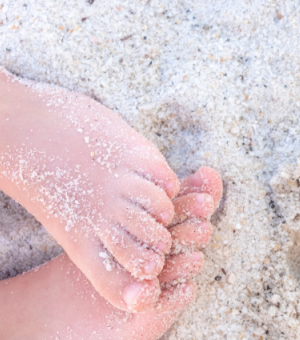Thursday, March 10, 2022
Everything you need to know about fungal infections and treatments
Dr. Marc-André Doré


Friday, March 4, 2022
Dermatology is not just about the skin, but also about everything that is part of the skin, such as hair, body hair and even nails!
Let's talk about nails!
Nails protect the delicate tissues of the fingertips and toes from various external aggressions. They are also very effective tools for scratching, scraping and tearing.
Healthy nails are smooth, free of bumps and uniform in color, usually pink.
Nails grow at a rate of 2.5 mm for fingers and 1 mm for toes each month
they grow faster in summer than in winter
if they are lost, they grow back in six months for finger nails and in one year for toe nails
they absorb more water than the skin!
Nails can provide many clues to your overall health. Various nail problems or diseases affecting another part of the body can cause nail abnormalities including small holes, ridges, streaks, yellowing and other forms of discoloration.

As a result of various daily activities, it happens that nails break. This is perfectly normal. However, if you notice that your nails break at the slightest impact, it is advisable not to take this problem lightly. In some cases, washing your hands too often or smothering your nails in nail polish can make them more fragile. Otherwise, here are the health problems that this type of nail can indicate:
A vitamin C deficiency, because vitamin C plays a very important role in strengthening nails
Psoriasis
A bad diet
It is then advised to have a healthy diet, rich in organic fruits and vegetables, and to avoid processed foods.
Having abnormally thick nails is not a good sign. It is of course important to have thick nails that do not break easily, but you should still be careful. If any of the following signs occur, it is advisable to see a specialist. Here's what thick nails can indicate:
A possible fungal infection
Lung problems
Blood circulation problems
Thick, loose nails may indicate a problem with the thyroid gland
Having pitted nails or nails with hollows is not a good sign, this may indicate :
Psoriasis
An autoimmune disease called alopecia areata or alopecia, which can cause hair loss and weaken the nails
Zinc deficiency
In this type of case, the nails contain barely visible lines that can be horizontal or vertical. Generally, these lines develop with age or may be the result of a localised infection. Here's what they may indicate:
Arthritis
Iron deficiency
Lupus, an autoimmune disease in which the immune system attacks and destroys the body's cells.
This type of nail has a forward curved shape with a very pronounced hollow. It is often referred to as a "spoon-shaped nail" and may indicate:
Hypothyroidism
Anemia or iron deficiency
A heart condition
Hemochromatosis, excessive absorption of iron
Therefore, it is advisable to have a balanced diet, rich in iron, minerals and vitamins.
If your nails are dry and brittle, it is advisable to pay attention to your hormone levels. This kind of sign can indicate:
A fungal infection, which weakens the nail and dehydrates it
A disorder of the thyroid gland
Digital hippocratism is characterised by a deformation of the fingertips. The nail takes a bulging shape towards the front, the fingertips swell and are sometimes painful. Several causes can be responsible for this phenomenon:
Genetics
A lung problem
Cancer
Tuberculosis
Liver disease
Yellowing of the nails can be caused by psoriasis, fungus, and even lung disease for example.
Green nail syndrome is often caused by a fungal infection called Pseudomonas.
Nails can be stained brown by nicotine use, nail polish use, and even chemotherapy.
Nails may turn blue after ingestion of the antibiotic minocycline and many other oral medications.
A bruise from an injury can turn part of a nail purple. Red or purple streaks can also be the result of subungual linear hemorrhage or small bleeds that occur under the nail.
Usually caused by an infection with Pseudomonas bacteria, black nails can also be caused by severe bruising. However, the possibility of subungual melanoma should never be ruled out when black discoloration of the nails is present.
White nails may be a hereditary trait or a sign of albumin deficiency (protein deficiency). White streaks may develop following trauma to the nail.
Our dermatology team can treat various nail problems.
Looking to learn more?
Thursday, March 10, 2022
Dr. Marc-André Doré
